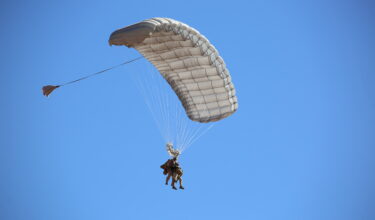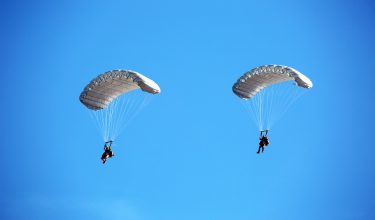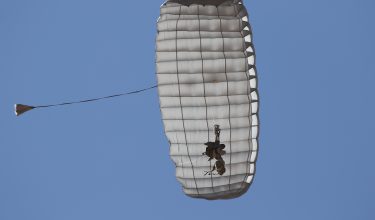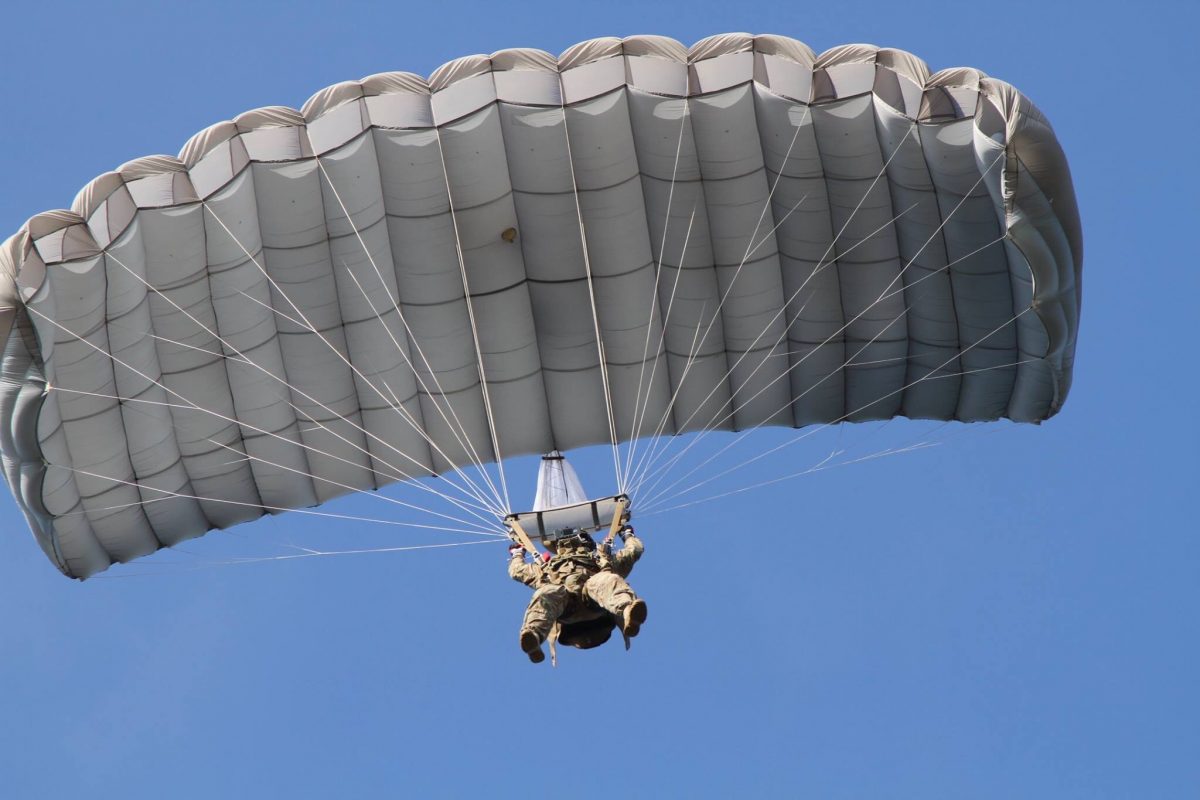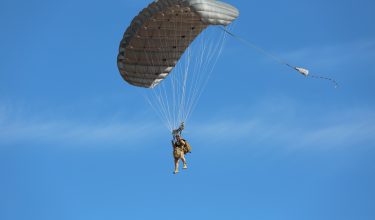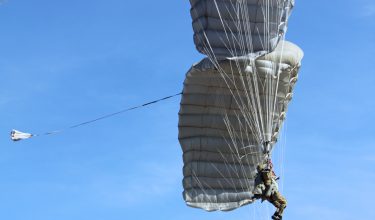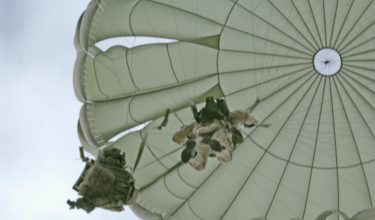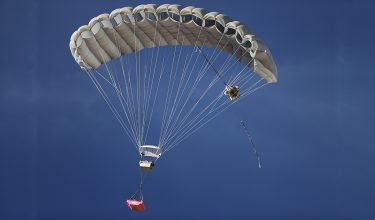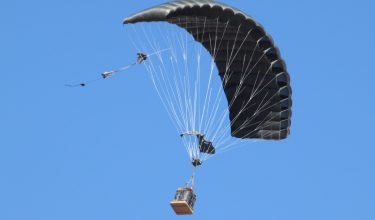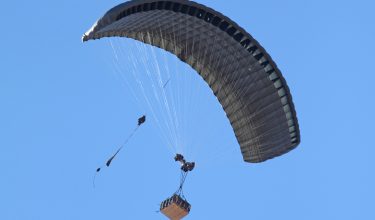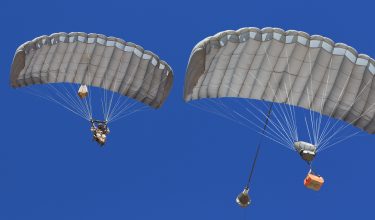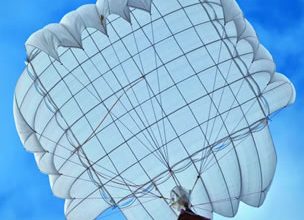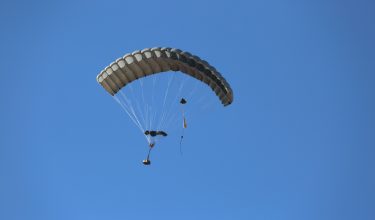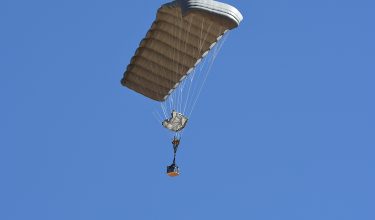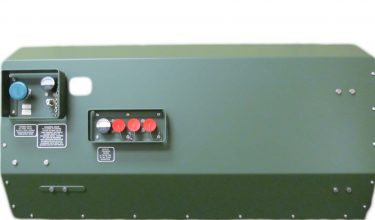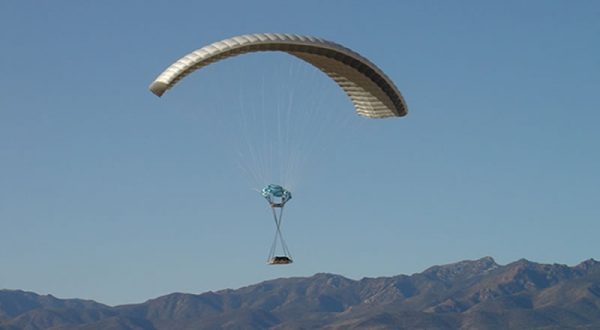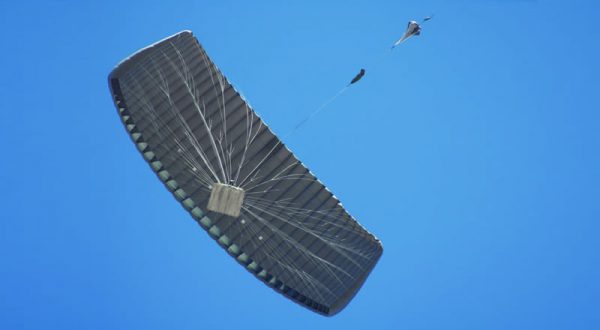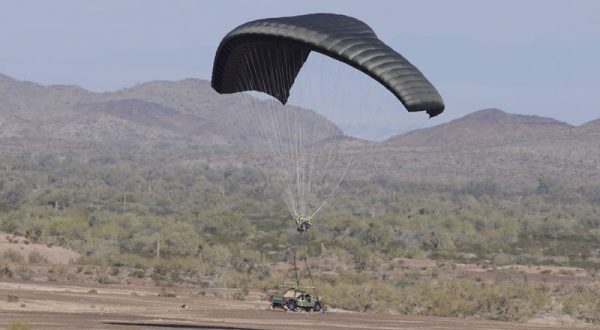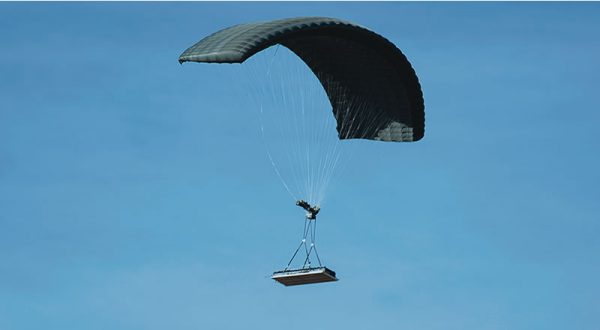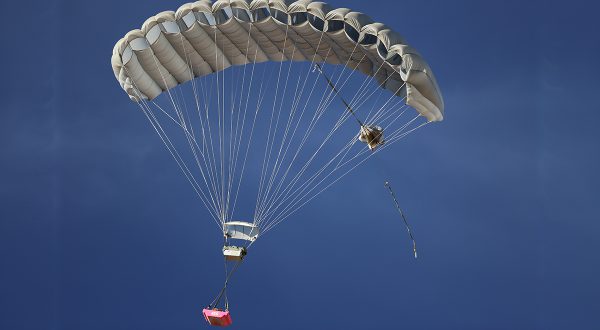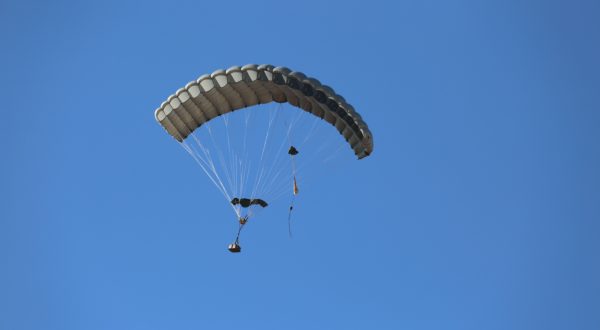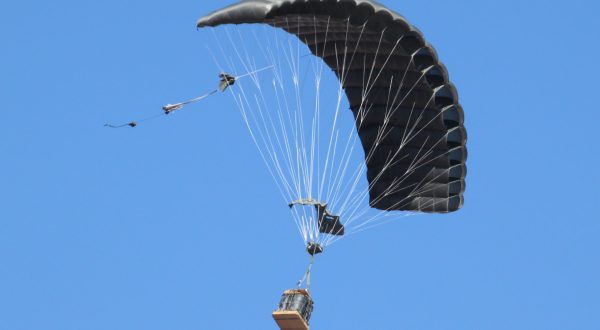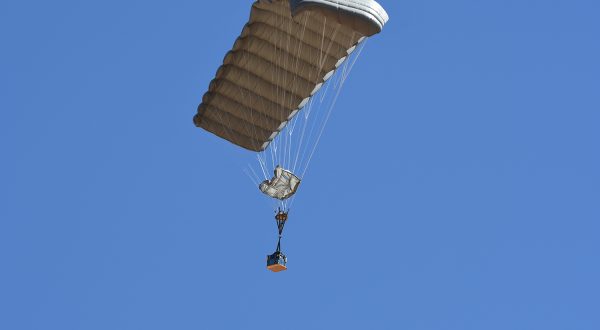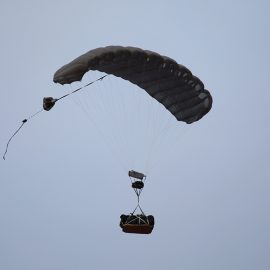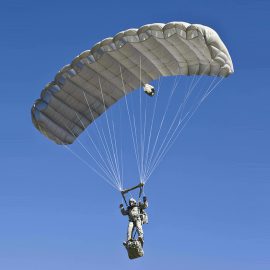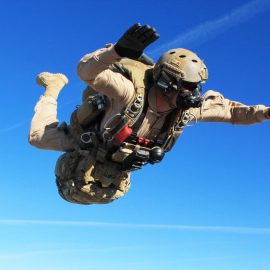Entrega Segura de Carga Valiosa – El Paracaídas Preferido de Entrega Aérea
Seleccionado como el sistema de paracaídas de entrega aérea preferido para el programa de sistema de conjunto de entrega aérea de precisión de 10,000 libras (JPADS 10k), el Dragonfly® de Airborne Systems es un sistema de entrega de carga guiado por GPS completamente autónomo. Con una cúpula de paracaídas ram-air completamente elíptica, ha demostrado su total capacidad para aterrizar dentro de 150 metros del punto de impacto designado.
Preciso y fácil de utilizar
El AGU del DragonFly® está programado del mismo modo que los demás AGUs fabricados por Airborne Systems. Los únicos datos requeridos para poner en funcionamiento el sistema son la ubicación del punto de impacto y el peso armado bruto (GRW) del sistema. Se pueden cargar los datos del viento en el AGU, pero no son necesarios para su funcionamiento. Al igual que un saltador lee constantemente los vientos bajo la cúpula y realiza las correcciones requeridas, El DragonFly corrige de forma continua hasta que termina aterrizando.
- Al utilizar los datos de punto de impacto único, la unidad de guía aérea (AGU) calcula su posición cuatro veces por segundo y ajusta el algoritmo de vuelo continuamente para conseguir la máxima precisión.
- Posee una relación de planeo de 3.5:1 que brinda una capacidad de desvío máxima.
- Se puede aparejar para entregas de extracción o de gravedad.
Diseño Modular Para el Empaque y el Mantenimiento
El sistema modular único permite que la AGU se cargue mientras que el paracaídas se empaque , lo que nos permite un tiempo de respuesta de entre menos de cuatro horas minimizando el tiempo entre entregas.
El sistema de paracaídas de entrega aérea DragonFly® usa una bolsa de despliegue similar a la bolsa de despliegue convencional del estilo de la G-11, con una línea estática de liberación estándar (RASL). El sistema puede cambiarse fácilmente de la configuración de lanzamiento de gravedad a la de extracción mientras el sistema se empaque.
Viene de forma estándar con el software de planificación de misiones (jTrax-MP)* de Airborne Systems.
Compatible con el software actual de planificación de misiones* JPADS de EE.UU. (JPADS MP).
*El planificador de misiones de Airborne Systems es capaz de cargar misiones simuladas en entornos operacionales virtuales utilizando el software de mapeo de terreno.
Planificación de Misiones Militares
Es esencial utilizar un planificador de misiones para conseguir un despliegue exacto del DragonFly®. La planificación de la misión se puede controlar con el planificador de misiones jTrax de Airborne Systems, o con la aplicación actual de planificación de misiones para lanzamiento aéreo de las Fuerzas Armadas de EE.UU (CAT MPA). El software de planificación de misiones calcula el punto de liberación del sistema utilizando datos de viento previsto y las características de la cúpula del DragonFly®. El planificador de misiones jTrax de Airborne Systems también es capaz de cargar misiones simuladas utilizando el software de mapeo de terreno incluido. Simulando las misiones antes de un lanzamiento actual permite que la tripulación se asegure de que el terreno no afectará a la misión.
Unidad de Control GPADS
La unidad de control remoto permite que un usuario programe el sistema de forma remota en una misión, y se puede utilizar para controle el estado de los sistemas mientras se encuentra abordo de la aeronave, antes del lanzamiento. Después de haber lanzado el DragonFly®, se puede utilizar la unidad de control remoto para controlar la ubicación y su destino mientras está volando. Si se desea, un operador puede cancelar la unidad de guía de vuelo y controlar el vuelo del sistema de forma manual.
Familia de Sistemas Militares – Paracaídas de Entrega Aérea
El DragonFly® forma parte de la familia de plataformas GPADS desarrollada y fabricada por Airborne Systems. Los sistemas MicroFly®, FireFly®, y DragonFly® pueden entregar pesos armados brutos de 90,7 kg. (200 libras) hasta 4,535 kg (10,000 libras). Airborne Systems también está desarrollando el MegaFly® y el GigaFly® que aumentarán el rango del peso armado bruto hasta 19,050 kg. (42,000 libras). Todos funcionan con un algoritmo, una interfaz de usuario y un planificador de misiones común. La metodología de empaque de todos los sistemas es idéntica, así que no se requiere mucha preparación para calificar a un aparejador acerca de los diferentes sistemas.

